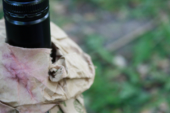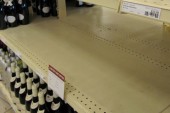
I risk excommunication by making this comparison, but choosing wine on a restaurant list is a lot like gambling in a casino. Just as smart gamblers know the strategic ways to bet, the smart diner, even without intimate knowledge of the wine list, can tip the odds in favour of getting the most wine for their money. A little inside understanding about how wine programs are assembled will go a long way to making you a smarter and more successful diner.
In a casino, each game has an inherent advantage that favors the house, called the ‘house edge’. This represents what the casino expects to take in from each game, and it varies from game to game. Basic statistical analysis reveals, for example, that Keno has one of the highest house advantages at a whopping 25%. That means the house profits $25 for every $100 wagered overall. Double odds craps and blackjack, on the other hand, are where the smart money is wagered. These games have a house edge of just .6% and .8% respectively, bringing in just 60 and 80 cents per $100. Gambling specialists also know that a skilled blackjack player can not only eliminate the house edge, but also even shift the edge in his favour. Bad gamblers play keno.
Similarly, every product listed on a restaurant menu has a ‘house edge’ — it’s priced to make money — but the percentage varies from item to item. Some items have higher cost margins, some lower. I’m not talking about the cost on the menu, but rather what the house takes as a percentage. A well-aged 24oz bone-in rib-eye may seem expensive at $80, but it’s probably the best relative value on the menu — the wholesale cost of the item might be $40, meaning that the cost margin is 50% – very high by industry standards – the restaurant only doubles its money. Compare with a bowl of spaghetti at $15: it’s cheaper, but much lower relative value— it probably costs less than $3 to make, yielding a cost margin of just 20%. Most of your money goes to the house, not the noodles.
When dining out, I’m after the best relative values on the wine list — I’d like the largest percentage possible of my money going to the wine, not the house. As with food, cost margins vary from wine to wine (in a well-run establishment), ranging from as low as 15%-20% (500%-600% over cost) for the most aggressively marked up, to over 50% (less than 200% mark up). The game is to know which wines are likely to have the ‘keno’ house advantage, and which the blackjack. Here are my “insider’s tips” on where your best plays will likely be found, that is, how to beat the house.
Tip # 1: Don’t Play Keno
Every wine program, like casinos, needs cash generators. I call these the ‘kenos’ of the wine list: the popular mainstream grapes and wine styles that sell themselves, the ones that must be on the list. In a well-run restaurant, these wines will have the biggest mark-up, and are used to subsidize the rest of the wine program. The sommelier knows they will outsell everything else, so this is where profits are maximized. The ‘Kenos’ can be identified by a combination of factors:
1) They will be temptingly priced just above the entry-level price point on the list (ie. if the cheapest bottle listed is $40, the kenos will sit around the $50 mark). Consumer psychology 101 dictates that the cheapest stuff doesn’t sell as well as items priced just above the bottom end. Position 3 or 4 on a wine list organized by ascending price is highly coveted by wine suppliers.
2) They will be popular/fashionable grapes or places that you’ve heard of. The wine world is daunting, and familiarity is comforting. The familiar flavours du jour change with fashion, but current cash cows include: Italian Pinot Grigio (probably the worst offender), New Zealand Sauvignon Blanc, basic oaked California Chardonnay or Cabernet Sauvignon or blends, and Argentine Malbec among others.
3) They will not be well-known or readily available producers. This is key: you cannot easily price reference a keno, as it will not be available at the LCBO. Take Santa Margherita Pinot Grigio for example, the LCBO Vintages number one best-selling white: no self-respecting sommelier would list it. For one, it’s below basic and well overpriced at $16.95. Secondly, and more importantly, you know that it costs $16.95, and can buy it anytime for far less than the restaurant has to sell it. The smart sommelier will find an equally basic Pinot Grigio that costs only $10 from a source you don’t have easy access to, and list it at $50, banking on the popularity of the grape. If you want popular, you’ll pay.
4) Despite their profitability, keno wines are usually scorned by sommeliers (as long as the sommelier is not the owner) — if there’s a perceptible rolling of the eyes or thinly disguised disdain when the wine is ordered, it’s probably a keno.
Bottom line: avoid wines made from popular grapes/places from unknown producers priced just above the entry point, and which may cause a barely susceptible display of contempt when ordered.
Come back to for tips 2 through 5 next week.
John Szabo is a master sommelier and wine writer for Toronto Standard. Follow his tweets here: @johnszabo.
For more, follow us on Twitter at @TorontoStandard, or subscribe to our newsletter.














